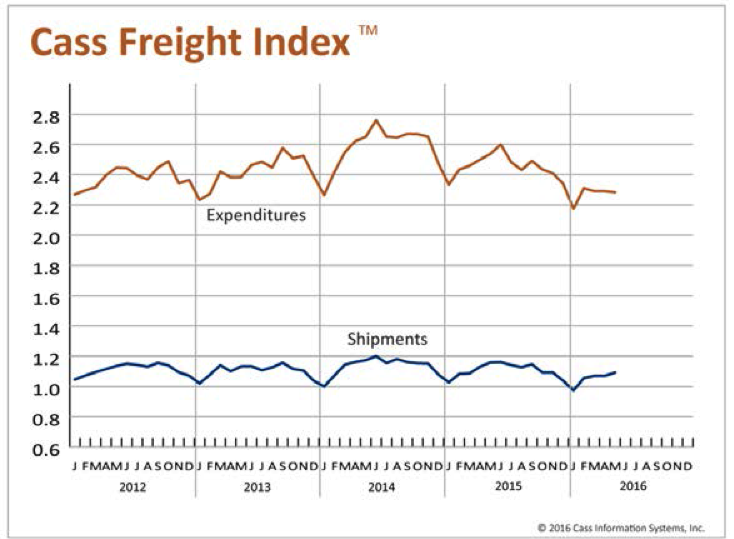Why Investing Is No Mystery to Me
Just keep your eye on the long-term trends. That's where the investing opportunities lie.

The stock market has literally gone nowhere for about two years now. And for two years pundits and experts alike have tried to offer explanations and predictions on when the market will break out from its' doldrums. The prognosis is mixed, with what seems like an equal split between whether that breakout will be to the upside or the downside.
Stories abound about the crisis of the day: from ISIS to Brexit; the dollar is up, the dollar is down; China's economy is crashing, China's economy is turning around; the Fed will raise interest rates, the Fed will lower interest rates…
But long-term market trends are more likely the result of long-term economic trends. The really big trends. The kind that tweaking monetary policy or changing Presidents won't really impact.
From just $107.88 $24.99 for Kiplinger Personal Finance
Become a smarter, better informed investor. Subscribe from just $107.88 $24.99, plus get up to 4 Special Issues

Sign up for Kiplinger’s Free Newsletters
Profit and prosper with the best of expert advice on investing, taxes, retirement, personal finance and more - straight to your e-mail.
Profit and prosper with the best of expert advice - straight to your e-mail.
What we know is that the developed world's population is: 1) growing at one of the slowest paces in history and 2) aging. The ramification is huge. Older people buy less stuff. Smaller and older populations mean even less stuff gets bought. The manufacturing of stuff is the key driver to wealth creation through wages and consumption. Growing wealth means higher tax revenue without increasing tax rates. Conversely without the growth of stuff, wealth is stagnant and government deficits rise to meet increasing demands from an aging population and mandatory spending increases.
Below is a graph from the May Cass Freight Index Report. The top line is expenditures on freight shipments, which includes price and volume. Actual shipments is below, shown with the blue line.

The takeaway: Shipments have been flat since the beginning of 2012. Currently we are at a three-year low for comparable monthly shipments. Things aren't improving.
In the U.S., we are somewhat buoyed by a stronger, larger and growing service sector. But jobs and wages still require a vibrant manufacturing base for a broad-based economic revival.
The point is this: Until global demand for goods and services turns up, global economies will struggle, deficits will continue to rise and interest rates will remain low. You can knock yourself out following all the economic minutiae and various guesses as to what will affect what. But the simpler alternative is to follow how much product is being moved around the globe. When shipments and transportation indexes hit new highs, I'll be comfortable that any stock rally will be real.
Is There Hope for Change?
Demographically we could be in the economic doldrums for another decade or more, which could mean mediocrity for broad based indexes, such as those represented by the MSCI global indexes.
If not a purely stock picker's market, this could most likely be a sector picker's market. One way to possibly profit is to look at big trends, such as demographics, that are too big to be affected by the turmoil of the day. For example, when I hear people talk about the upcoming election and how they are afraid to invest, I simply ask, "Is anyone really going to stop buying drugs (legal), diapers or toilet paper, whether Trump or Clinton is elected?" So if you're really worried, buy Johnson & Johnson (symbol JNJ), Procter & Gamble Co. (PG) and Walgreen's (WBA). And collect your dividends while you wait for better times.
A new, bigger and hopefully a "not screw up-able" trend is the Internet of things. Some futurists predict everyone will own seven devices that will be connected to the Internet by 2020, in addition to their computer and smart phone. At first, I thought this seemed high. But let's count. In addition to my desktop and phone (I don't have a tablet device), I have two Amazon Kindles. My Garmin fitness/golf watch makes five. Sixth, there's my Amazon Firestick for TV. The other TV is a "smart TV," so that's seven. Two EcoBee Internet-connected thermostats bring me to eight and nine. Then there's my Fitbit scale.
Looks like I'm four years early.
And look at what's also available or coming soon: Samsung is advertising a refrigerator that connects to the Internet to inform you when you need things such as milk or when your broccoli is spoiling. Home security systems, better smart watches, the rest of your kitchen appliances – stoves will be capable of pre-programming to bake the perfect loaf of bread (no more timers or temperature settings).
And that is just in the home. Cars will all be linked (controlled) over the Internet. Every step of manufacturing will be monitored and controlled. Lawyers, medical doctors, virtually all professionals will have more and more data made available and analyzed by artificial intelligence. And all of the above produces data that needs a place to be uploaded and safely stored in the cloud.
By some estimates, this will all add up to a $6 trillion market over the next five years. Will a Brexit stop this trend? A rising (or falling) Yuan? Clinton or Trump? No. This is a trend in its infancy that will play out over the next decade.
Bottom Line
Sometimes we make investing too hard. The global economy and, by extension, stock markets certainly are sailing into a headwind. But that doesn't mean that industries and companies won't change. And where there is change there is opportunity. Global chaos doesn't mean not investing, or for heaven's sake, putting all your money into gold bars. Invest in consumer staple producers such as P&G and JNJ, and collect your dividends. And for growth, invest in the inevitable. Ignore the day-to-day analysis, and follow the big trends. Short-term volatility will make way for a long-term trend when we see the world making, shipping and selling more stuff.
Bill DeShurko started in the financial services industry in 1987. He is the owner of 401 Advisor, LLC, a Registered Investment Advisor.
Profit and prosper with the best of Kiplinger's advice on investing, taxes, retirement, personal finance and much more. Delivered daily. Enter your email in the box and click Sign Me Up.

Bill DeShurko started in the financial services industry in 1987 and formed his own practice in 1994. He is the owner of 401 Advisor, LLC a Registered Investment Advisor located in Centerville, Ohio. After following fads, phases, and products of the day for nearly 30 years he hopes that his insights and experience can help today's investors navigate the financial markets.
-
 Premium Rewards Cards: More Perks, Higher Fees
Premium Rewards Cards: More Perks, Higher FeesSome issuers are hiking the annual fee on their flagship luxury credit cards by hundreds of dollars. Are they still worth using?
-
 3 Trips to Escape the Winter Doldrums, Including An Epic Cruise
3 Trips to Escape the Winter Doldrums, Including An Epic CruiseThree winter vacation ideas to suit different types of travelers.
-
 The Retirement Income Trinity: Cash Flow, Longevity and Tax
The Retirement Income Trinity: Cash Flow, Longevity and TaxRetirement income planning is essential for your peace of mind — it can help you maintain your lifestyle and ease your worries that you'll run out of money.
-
 How to Master the Retirement Income Trinity: Cash Flow, Longevity Risk and Tax Efficiency
How to Master the Retirement Income Trinity: Cash Flow, Longevity Risk and Tax EfficiencyRetirement income planning is essential for your peace of mind — it can help you maintain your lifestyle and ease your worries that you'll run out of money.
-
 I'm an Insurance Expert: Sure, There's Always Tomorrow to Report Your Claim, But Procrastination Could Cost You
I'm an Insurance Expert: Sure, There's Always Tomorrow to Report Your Claim, But Procrastination Could Cost YouThe longer you wait to file an insurance claim, the bigger the problem could get — and the more leverage you're giving your insurer to deny it.
-
 Could a Cash Balance Plan Be Your Key to a Wealthy Retirement?
Could a Cash Balance Plan Be Your Key to a Wealthy Retirement?Cash balance plans have plenty of benefits for small-business owners. For starters, they can supercharge retirement savings and slash taxes. Should you opt in?
-
 7 Retirement Planning Trends in 2025: What They Mean for Your Wealth in 2026
7 Retirement Planning Trends in 2025: What They Mean for Your Wealth in 2026From government shutdowns to market swings, the past 12 months have been nothing if not eventful. The key trends can help you improve your own financial plan.
-
 What Defines Wealth: Soul or Silver? Good King Wenceslas' Enduring Legacy in the Snow
What Defines Wealth: Soul or Silver? Good King Wenceslas' Enduring Legacy in the SnowThe tale of Good King Wenceslas shows that true wealth is built through generosity, relationships and the courage to act kindly no matter what.
-
 An Investing Pro's 5 Moves to Help Ensure 2025's Banner Year in the Markets Continues to Work Hard for You in 2026
An Investing Pro's 5 Moves to Help Ensure 2025's Banner Year in the Markets Continues to Work Hard for You in 2026After a strong 2025 in the stock market, be strategic by rebalancing, re-investing with a clear purpose and keeping a disciplined focus on your long-term goals.
-
 Introducing Your CD's Edgier Cousin: The Market-Linked CD
Introducing Your CD's Edgier Cousin: The Market-Linked CDTraditional CDs are a safe option for savers, but they don't always beat inflation. Should you try their counterparts, market-linked CDs, for better returns?
-
 How to Protect Yourself and Others From a Troubled Adult Child: A Lesson from Real Life
How to Protect Yourself and Others From a Troubled Adult Child: A Lesson from Real LifeThis case of a violent adult son whose parents are in denial is an example of the extreme risks some parents face if they neglect essential safety precautions.